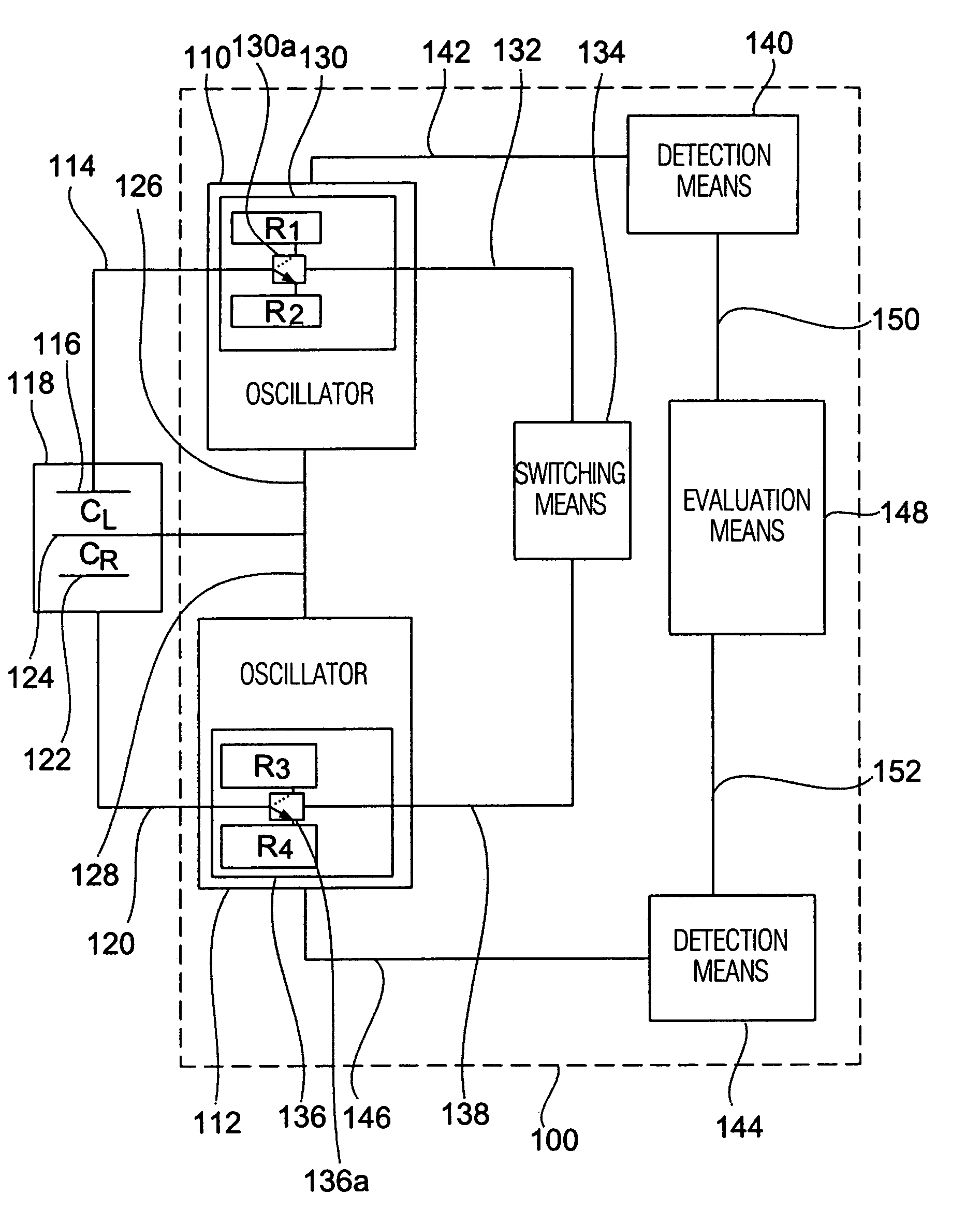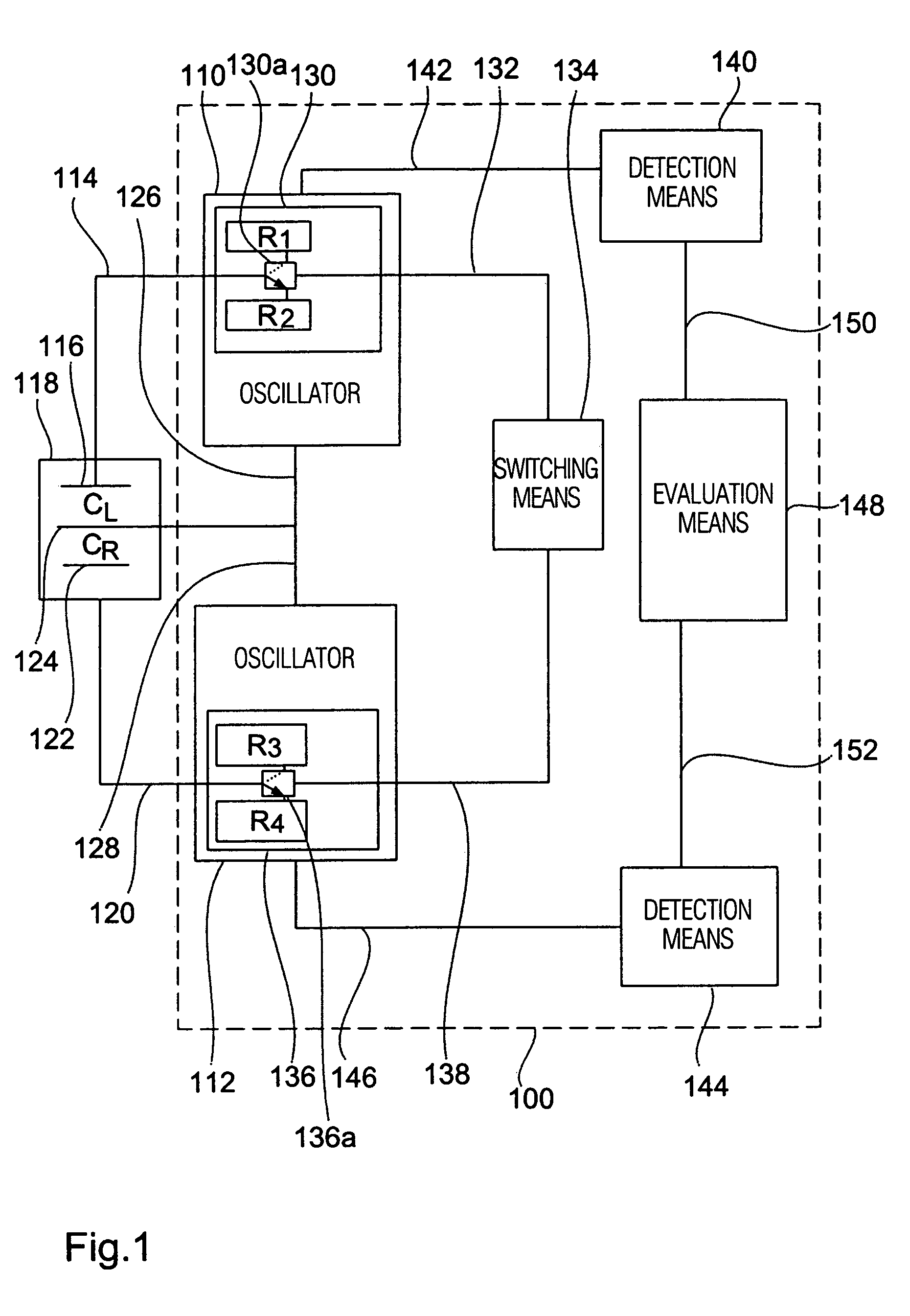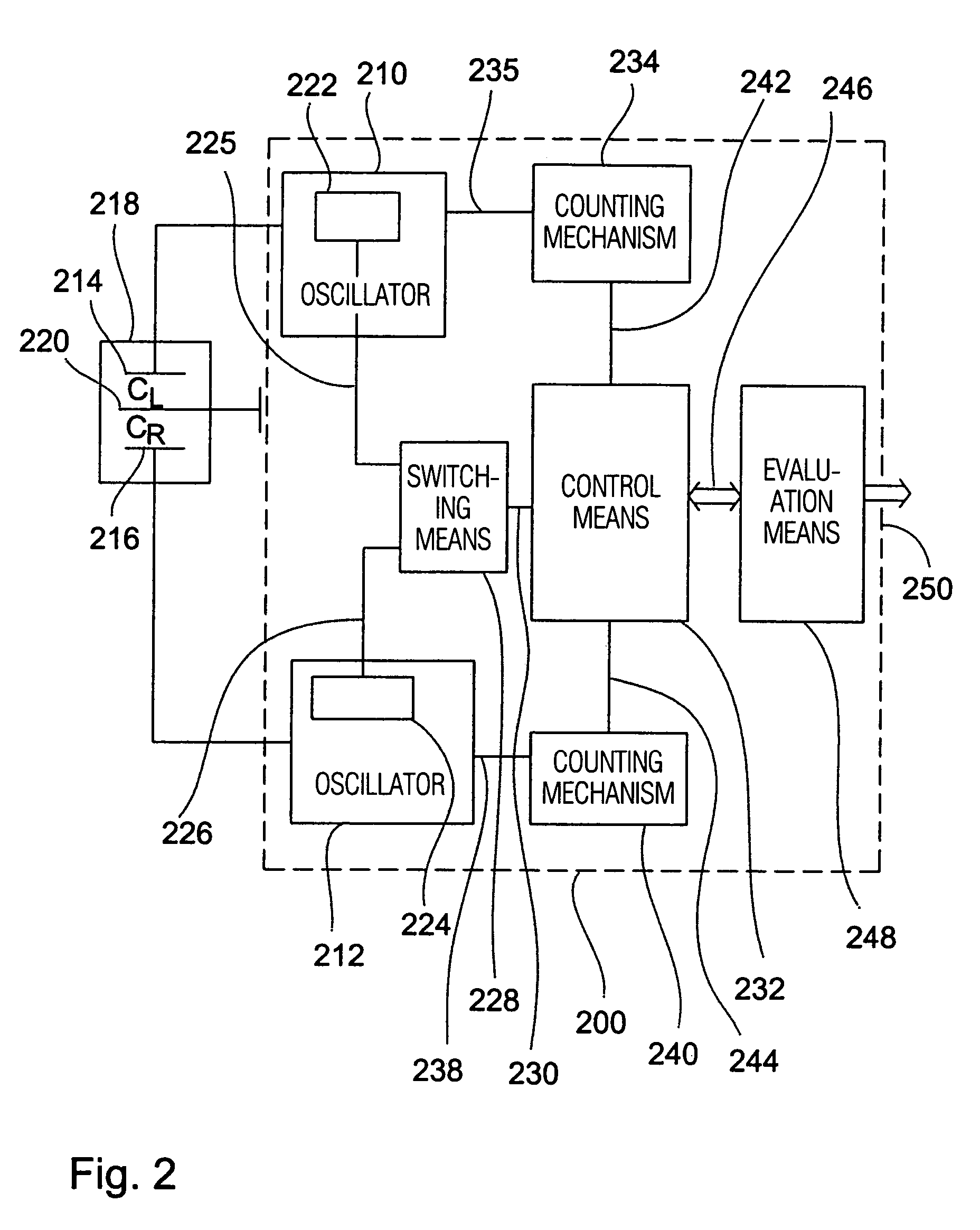Apparatus and method for reading out a differential capacity with a first and second partial capacity
a differential capacity and differential capacity technology, applied in the field can solve the problems of inability to secure readout of fast changes in capacity which occur for a short time during the transient state, inability to use continuous readout with high accuracy, and inability to use specific problems or only restrictions, etc., to achieve the effect of reducing the number of times of differential capacity reading, and reducing the number of differential capacity readings
- Summary
- Abstract
- Description
- Claims
- Application Information
AI Technical Summary
Benefits of technology
Problems solved by technology
Method used
Image
Examples
Embodiment Construction
[0024]Referring to FIG. 1 a readout apparatus 100 is shown as a first embodiment of the present invention. The readout apparatus 100 comprises a first oscillator 110 and a second oscillator 112, the first oscillator 110 being connectable to a first fixed electrode 116 of a differential capacity 118 via a line 114, while the second oscillator 112 is connectable to a second fixed electrode 122 via a line 120. In one embodiment the first oscillator 110 and the second oscillator 112 each comprise a square-wave oscillator formed by a CMOS circuit.
[0025]The differential capacity 118 comprises a moveable electrode 124 connectable to the first oscillator 110 via a line 126 and to the second oscillator 112 via a line 128. The differential capacity 118 includes any known type, for example a semiconductor differential capacitor, which is formed by means of known etching and masking steps in a semiconductor substrate. For example, the differential capacity 118 includes a sensitive element of a ...
PUM
 Login to View More
Login to View More Abstract
Description
Claims
Application Information
 Login to View More
Login to View More - R&D
- Intellectual Property
- Life Sciences
- Materials
- Tech Scout
- Unparalleled Data Quality
- Higher Quality Content
- 60% Fewer Hallucinations
Browse by: Latest US Patents, China's latest patents, Technical Efficacy Thesaurus, Application Domain, Technology Topic, Popular Technical Reports.
© 2025 PatSnap. All rights reserved.Legal|Privacy policy|Modern Slavery Act Transparency Statement|Sitemap|About US| Contact US: help@patsnap.com



